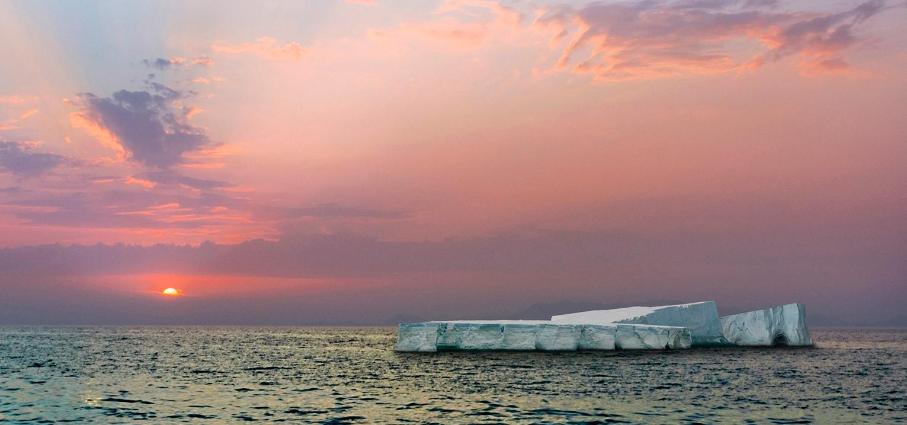
Exhibition dates: Sept. 17 – Dec. 10, 2022
Luciana Abait: On the Verge will be on the view at the Hilliard Museum at the University of Louisiana, Lafayette from March 3 to July 29, 2023.
This fall Loyola Marymount University’s Laband Art Gallery is delighted to feature Luciana Abait in a survey exhibition that offers an unprecedented opportunity to experience the artist’s striking work across media in painting, photography, sculpture, video installation and augmented reality. Luciana Abait: On the Verge includes more than 20 pieces created from 2017 to the present that center environmental precariousness and conjure imaginary worlds that portend global climate catastrophe.
As an immigrant from Argentina to the US, Abait (b. 1971, Buenos Aires, Argentina) extrapolates from her own subjective feelings of displacement and vulnerability to urge us to consider how global warming is wreaking havoc, especially on the lives of climate migrants. For Abait, creating a piece like “The Maps That Failed Us” (2018-22)—a monumentally-sized sculptural installation of the maps of the world shown completely at random and out of context—makes visible our social, physical, and above all, planetary interdependence. The artist keenly invites us to consider our collective geographic proximity as well as our shared universal fate to reorient our sense of shared survival.
“I find that Luciana’s depictions our of contemporary climate crisis are likewise overwhelming and invitational. Her palette is sometimes skewed neon and deliberately unnatural which causes an unsettling effect,” explains Karen Rapp, director of the Laband Art Gallery and curator of the exhibition. “But, at the same time she renders her pictures with such intentionally beautiful surfaces and colors to remind us of what is at stake: her landscapes are figuratively pushing at the edge of planetary existence. It’s as if she’s urging us to step into the scene and do something good,” Rapp added.
Indeed, Abait revels in the presentation of incongruities in her vivid landscapes—in color, size, and scale—to convey her ideas. One of her newest pieces speaks to the dire conditions and sense of deprivation we face under unprecedented planetary duress. “Agua,” (2021) is a site-specific digital projection of a cascading waterfall that has been shown previously for only a few hours at outdoor festivals. Now, it is installed for the first time inside the gallery as a 20-foot-tall voluminous artifact of nature. “It is a conspicuous sight for sore eyes in our drought weary Los Angeles,” Rapp comments. “For Luciana, the reality of dwindling waterfalls is obviously devastating but she is harnessing her optimism and hoping to reawaken humanity’s need for rebirth and renewal by conjuring virtual water as a spiritual and existential salve.”
Artists like Luciana Abait play a crucial dimension in how they are able to lead us to a promising future. Can art solve our climate crisis? It can’t. Or rather, it can’t alone. To borrow from the preeminent artistic director of the Serpentine Gallery in London, Hans Ulrich Obrist, from a recent interview, “we could never say that art can solve this very massive problem. But I think no field can solve this on its own. Art can be a wake-up call.”
***
Image credit: Luciana Abait, Day, 2019, Photocollage, soft pastel and paper mounted on wood panel, 84 x 110 in.